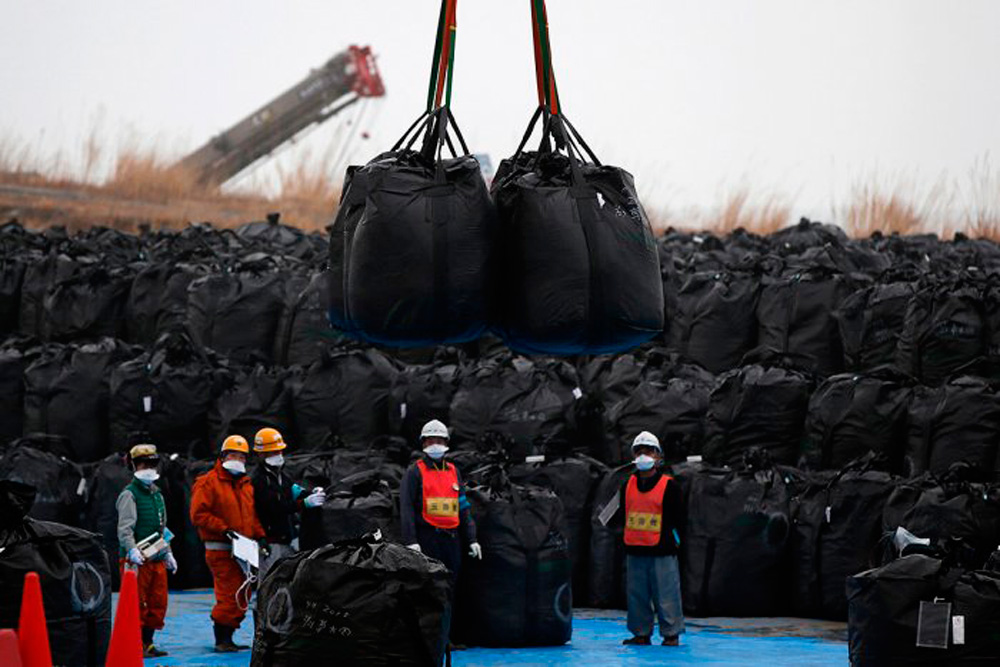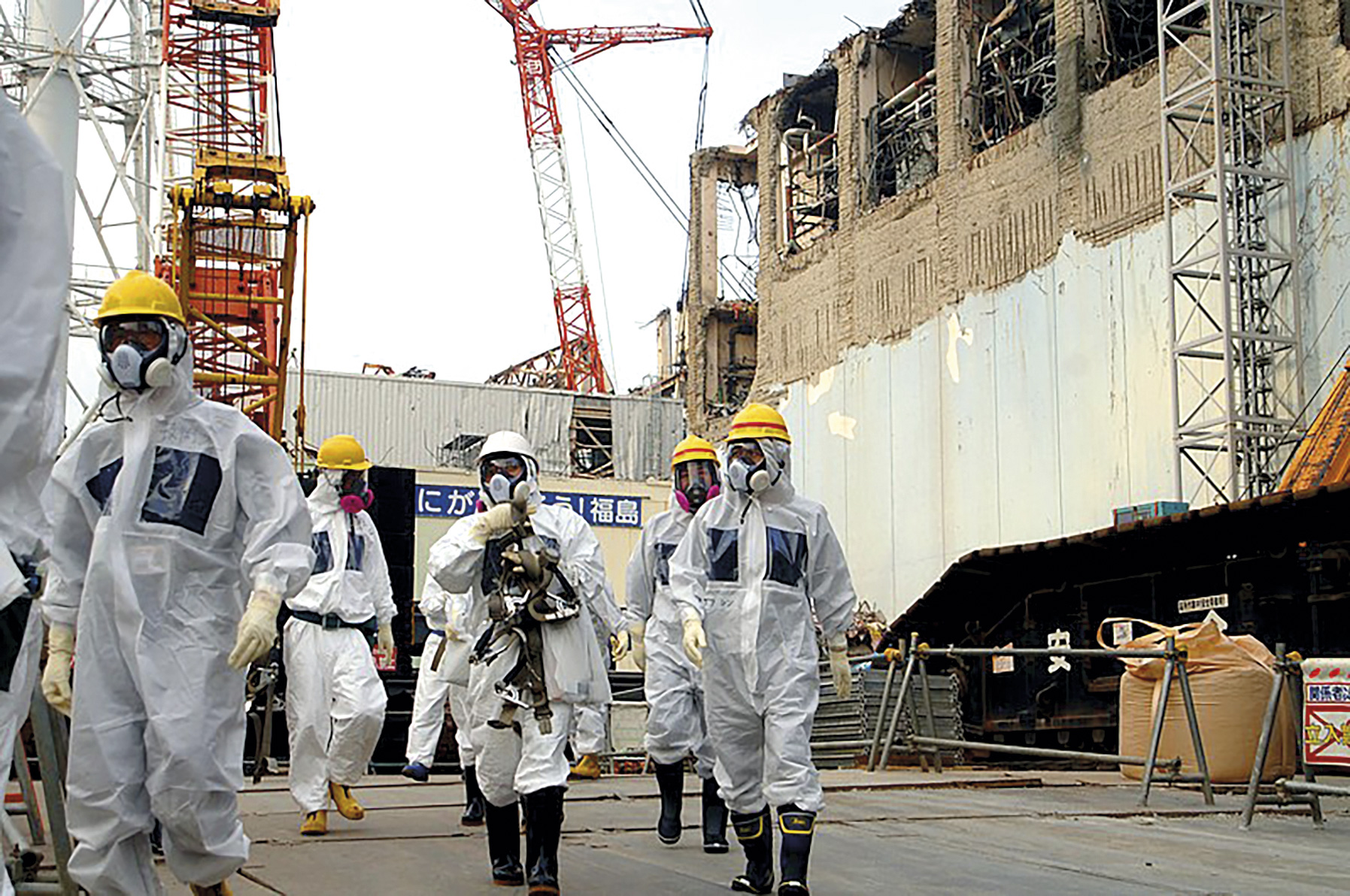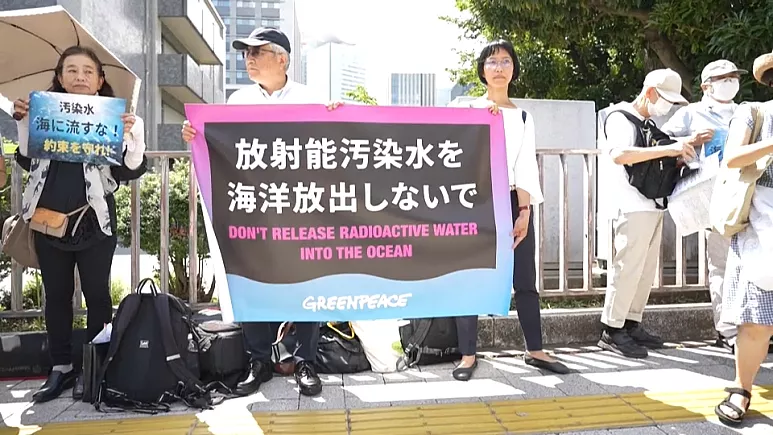"Radionegationism" or resilience: Tactics to transform fukushima into habitable
- The accident occurred ten years ago at the Fukushima nuclear power plant in Japan, Daiichi, caused by the tsunami of March 11, 2011. Following the 1986 Chernobyl accident, gravity is repeated at 25 years later. The decade has passed and it seems that citizens can return to the vicinity of the plant, capture food safely in their lands and waters. At least the Government of Japan says so. With the owner of the TEPCO plant, we have started to look at the reality drawn by the political leaders, also focusing on the reactive waste they cannot keep.

Ten years
have passed since the accident at the Fukushima nuclear power plant. One of the most serious nuclear accidents in history for a decade has been turned by the Japanese Government into a mere historical event and a detail of the past. The United Nations has recently confirmed what has been repeated by its Government: “The nuclear accident has had no negative effects on the health of the citizens of Fukushima.” “In radicionegacionismo,” according to the book author Thierry Ribault Contre la résilience, à Fukushima et ailleurs (Against resilience, Fukushiman and other places), and this with a clear strategy of “making the apocalypse normal.”
This radionegationism rhymes with the manipulation of the figures and the preservation of the truth. One of the clearest examples is that the authorities have raised the contamination barrier to 20 millisievert radiation, which for example has been placed four times above the level of Txernobyl, and that the International Conference on Radiological Protection ICRP sets at 1 mSv. Another example is the political decision to stop tests to measure radioactivity by area, in the belief that “stress increased”.
Given this false reality, the government has long been making citizens return to the villages that have been emptied in 2011. First of all, to test the costs, which have put an end to social aid for refugees. On the contrary, it now allocates a subsidy to those who return to the people: YEN 1.2 million or EUR 9,500 to the local family that comes to at least five years; and YEN 4 million or EUR 32,000 to which economic activity begins.
Let us recall that, as soon as the accident occurs, the Government of Tokyo took the task of evacuating the towns near the centre, initially for the two perimeter kilometres, and soon it also extended to the 20 kilometres. A total of 80,000 people migrated forcibly and an additional 80,000 from the area. Currently, the drainage area is only 336 km2, 2.5 per cent of the Fukushima region. Twelve villages were empty in 2011, ten years later they cannot return to Okuma, Namie, Tomioka and Futaba, the closest to the central one, even if they had permission to make displacements. Of the 160,000 refugees, more than 120,000 are returned to the vicinity of the plant. “Added to the accumulated traumatisms is the new trauma with the return, because they have nothing left of the landscape of the past,” says Cécile Asanum-Brice, a sociologist based in Japan. And, of course, it also regrets the fatigue of living in a radioactive medium.
Resilience ... Following Wikipedia, “when we say that a person or a group is resilient, we refer to their ability to deal with the casualties, even a strengthening may emerge from this situation.” This notion that the global coronavirus crisis has brought to the attention of our rulers was assumed years earlier by the Japanese Government.
“Resilience” up and down
Ribault analyzes the use of this word in his book Contre la résilience, à Fukushima et ailleurs: Resilience is for him the “good sight technology”, the “almost erligious indoctrination mechanism”. The day after the nuclear accident, the Government set up the Ministry of Resilience, as well as numerous laws and White Papers with stamp marks of resilience. Officially, although they have been carried out with the aim of seeking citizen cooperation, Ribault has another objective: “Tool for the erliptization of the catastrophe”.
Sabu Kohso, author of the book Fukushima et ses invisible: cahiers d’enquêtes politiques (Fukushima and its invisible: political polling books), also sees the maneuvers of normalizing life in the radio environment. “They propose a new crisis management regime in which citizens are kidnapped.” Defines an explanatory element of feasibility: “The consequences of radioactivity are gradual, invisible and disseminated in time and space, and do not manifest violently.” In this sense, they are authorized to fish, they are enabled advertising campaigns for the consumption of Fukushima food, they have reopened classes, etc. I mean, normal life.
But, despite the fact that radioactivity is not visible, the reality of radioactive waste is unquestionable.
Preventing waste disposal
The Government is trying to pour 1.2 million tonnes of polluted water into the ocean currently stored in tanks, which means a daily increase of 140,000 litres of rain water and cooling water from reactors. In the article by Reporterre, Fukushima nous a fait entrer dans l’ère du ‘capitalist sme apocalyptique’ (Fukushima introduces us to the era of ‘apocalyptic capitalism’), we can read that they have already polluted 300 tons of water each day by dumping into the ocean. All tanks will be filled by the summer of 2022. Officially, before discharge, most radioactive elements are filtered, except tritium. However, both the government and the central government ensure that a good measurement and dilution of water amounts can avoid distress.
They also contain other wastes: fourteen million cubic metres of accumulated radioactive waste (contaminated plants, contaminated land, protective clothing and other radioactive materials). For example, they have millions of land-filled sacks with Cesium 137 radioactive elements, which scraped five centimeters from the land surrounding the central.En place of being thrown into the sea, the Japanese authorities have another solution: to incinerate everything in the incinerators, at least because the materials to be stored safely take up less space. The total decontamination of the plant will take another 30-40 years to count. Greenpeace has denounced that, when it has been requested to return to the villages around the plant, only 15% of the decontamination has been carried out.
In other words, Fukushima is the “perpetual catastrophe”, according to Sabu Kohso. The 2011 accident remains a daily reality, but the authorities are covered by another reality. Proof of this is the Olympic Games to be held this summer in Japan, which will start with the Olympic flame 20 kilometres from the plant. The Olympic Game is installed in the Fukushima station a banner informing the number of days ahead … more specifically, until recently, on the screen that reported the radioactivity of the air.
The Fukushima nuclear power plant exploded on 11 March 2011. The images that were broadcast on television perpetuated the moment of the explosion and the subsequent white cloud in the sky. In the news of the coming days and months Fukushima had special relevance, but the speed... [+]

























